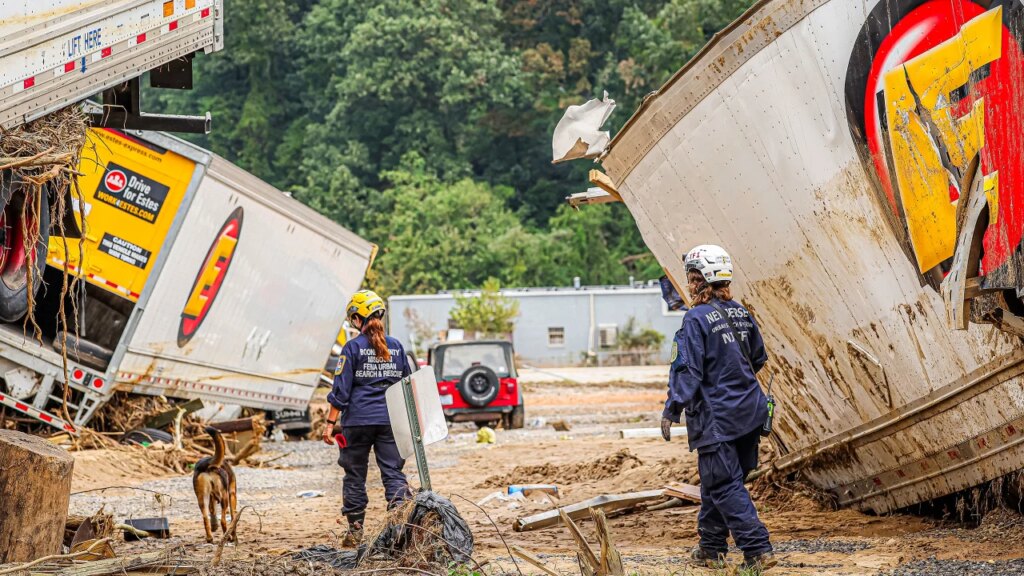The Federal Emergency Administration Company, or FEMA, is thought for responding to excessive climate like hurricanes and wildfires—the sorts of disasters which are turning into extra intense and extra frequent as local weather change will get worse. The company additionally has a program that sends billions of {dollars} proactively to communities, municipalities, and states in order that they’ll put together for these occasions earlier than they hit.
In an inside FEMA memorandum obtained and first reported by Grist, the Trump administration introduced its plans to dismantle that program—the most important local weather adaptation initiative the federal authorities has ever funded—whilst disasters incur hundreds of billions of dollars’ worth of damages throughout the USA. The choice comes as at the least seven individuals have been killed this week as tornadoes and catastrophic flooding descended on the Central United States in what meteorologists referred to as a once-in-a-generation event.
The Constructing Resilient Infrastructure and Communities program, or BRIC, was established in 2018 throughout President Donald Trump’s first time period, changing the same FEMA initiative. BRIC’s first spherical of funding was launched in 2020, when Trump was nonetheless in workplace, and in 2023, this system awarded close to a billion dollars to scores of communities, states, and tribal nations throughout the nation. In January, earlier than Trump started his second time period, the company opened its fiscal year 2024 notice of funding, with $750 million in matching grants made obtainable to candidates from areas that acquired a significant catastrophe declaration throughout the previous seven years.
However FEMA now goals to cancel these grants and every other BRIC grants that haven’t been paid out but by the federal authorities, based on the pre-decisional memo dated April 2 from Cameron Hamilton, a Trump administration official who’s serving as FEMA administrator till the president appoints a everlasting head of the company.
“BRIC was one more instance of a wasteful and ineffective FEMA program,” a FEMA spokesperson advised Grist. “It was extra involved with local weather change than serving to People affected by pure disasters.”
BRIC usually shoulders 75% of the price of a given resilience venture, and as much as 90% of the price of tasks in deprived communities. This system’s emphasis on fairness is what might have marked it for demolition—the Trump administration has been systematically dismantling Biden-era efforts to infuse fairness into governmental packages and direct extra local weather spending towards underrepresented teams.
FEMA workers disputed Hamilton’s argument within the memo that BRIC grants “haven’t enhanced the extent of hazard mitigation as a lot as desired.”
“I don’t know the place that got here from,” mentioned one company worker who most popular to remain nameless.
In keeping with a supply throughout the company, the Trump administration requested BRIC staffers to supply justification for this system and its Direct Technical Help sister initiative, which affords nonfinancial help to assist communities navigate the BRIC funding course of and determine the hazards they face. The request was made on Tuesday this week with a Wednesday deadline.
With a good turnaround, staffers supplied success tales from throughout the nation. BRIC awards have helped communities bury energy traces, construct culverts, defend wastewater services from being inundated by flooding, and improve energy stations. If BRIC is frozen, communities will not have the ability to apply for the grants for fiscal yr 2024 made obtainable in January. Initiatives which have been chosen in previous years however not but disbursed funds will not obtain cost. Partially accomplished tasks shall be scrutinized and reviewed, the memo mentioned.
“The administration now has certainly one of FEMA’s best grant packages on the chopping block,” mentioned Shana Udvardy, a senior local weather resilience coverage analyst with the Local weather and Vitality program on the Union of Involved Scientists. “It’s oversubscribed virtually each single yr.” In fiscal yr 2023, FEMA received more than 1,200 subapplications throughout all 50 states, 35 tribes, 5 territories, and Washington, D.C., totaling greater than $5.6 billion in requests. It was capable of present lower than a fifth of the cash requested.
A looming query is whether or not FEMA can yank grants which are being funded with cash appropriated by Congress. The 2021 Infrastructure Funding and Jobs Act, also referred to as the bipartisan infrastructure legislation, allocated approximately $6.8 billion to FEMA for community-wide mitigation efforts, with a portion of this funding directed to the BRIC program. “If this administration does away with this system, it goes in opposition to a legislation that Congress handed,” Udvardy mentioned, “so there’s a priority there to be raised.”
This text initially appeared in Grist, a nonprofit, unbiased media group devoted to telling tales of local weather options and a simply future. Join its publication here.
